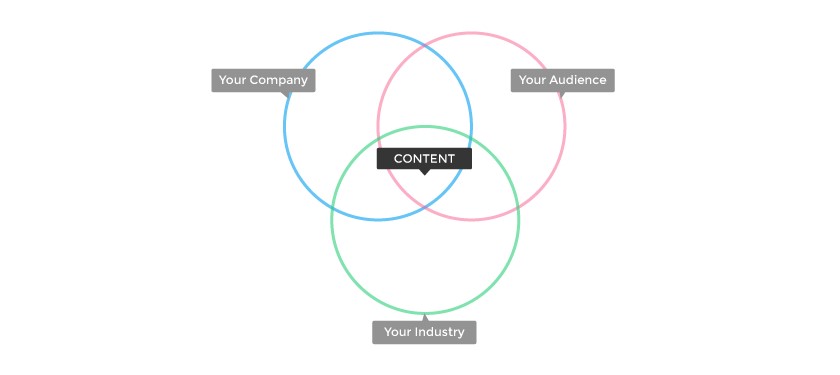Five Marketing "Best Practices" To Re-evaluate
- Published in Demanding Views
 By Braveen Kumar, Uberflip
By Braveen Kumar, Uberflip
Sooner or later, when they receive enough attention, useful advice and content marketing tactics run the risk of giving birth to buzzwords and generalized best practices.
Somewhere down the line, we lose sight of their initial usefulness or, worse, how they've evolved over time. It’s worth taking another look at these “best practices” to revisit their real value and relevance.
Tell More Stories In Your Content Marketing
"Storytelling" is an interesting buzzword because it's a deep craft with a long history that deserves to be studied outside of marketing.
But as content marketers, we only occasionally involve “stories” — most times we educate, demonstrate and present arguments.
Applying a narrative structure can create direction in a piece of content, especially in visual formats like infographics and SlideShare presentations. But the greatest asset of storytelling is the way it leverages connotation to pack more meaning in between the lines.
This is how stories arrest our disbelief, which makes it an effective way to make your marketing “not look like marketing”:
- Show your audience your brand's personality and authority in your industry;
- Show your audience that you understand their pain points; and
- Show your audience how you solve problems.
Don't use your content merely as an opportunity to sell — that's the equivalent of turning your blog into a podium, when it should be a stage to show off your brand.
Visual Content Dominates Text
While it’s generally true that visual content sees more shares and pickups, it's still subject to the noise and competition like any other content format. YouTube alone sees over 100 hours of video uploaded every minute.
Bland writing and uninspired angles can still be bland and uninspired when you shift them to a visual medium.
Investing in visual content is also more expensive and time consuming than investing in a blog post (although ultimately worth it, if done right).
On top of that, different content formats lend themselves well to different objectives.
Simplicity and engagement is the domain of infographics and SlideShare presentations. But in-depth topics and longer processes might be better explored in your long-form content, which offers a greater opportunity to educate and the chance to include visuals in blog posts to marry the best of both worlds.
The Ideal Length For Content Is...
The notion of an ideal length for content, especially long-form content, is hotly contested.
Why? Because there are exceptions to the rule who manage to do more with fewer words. Others do more with more.
Seth Godin publishes a short, few-hundred-word blog post every day. His audience loves his bite-sized insights. His blog is in line with the kind of standout thinking that’s part of his personal brand.
Yet some sources hold that 1,600 words is the ideal length for a blog post. While the argument for ideal lengths are often related to SEO, this is something you need to test with your own audience.
Length isn’t so much an asset or a deterrent for your content as much as perceived length is. "Scannability" and voice make a difference.
Remember the theory of relativity?
“Put your hand on a hot stove for a minute, and it seems like an hour. Sit with a pretty girl for an hour, and it seems like a minute. That's relativity.” — Albert Einstein
If your blog post is the equivalent of putting your reader's hand on a hot stove, they won't stick around to suffer through it.
It’s important to condense perceived reading time with:
- Shorter paragraphs;
- Clear structure and subheads;
- Economical writing;
- Bulleted Lists; and
- Strategic formatting.
Content Marketing Isn't About You; It's Always About Them
Nobody wants to hear you talk about your business or your miracle product in a blog that publishes daily. That much is true.
But the potential for content marketing success hinges on how you strategically position what you publish and whether the overall experience is truly built for sharing, lead generation, and measuring performance.
Your content — from the top of the funnel to the bottom — needs to touch upon your audience’s interests, your company’s brand and your industry.

There Is No More B2B Or B2C: It’s Human To Human, Or H2H
Marketers seem to either love this idea or hate it. All I know is I've seen it on a lot of PowerPoint slides.
H2H stresses the fact that humans are emotional creatures, and prefer when complex concepts are rendered in simple terms. I like the idea, but content marketing is about audiences of humans, each being different and dynamic.
There’s a reason why Kevin Spacey spoke at Content Marketing World. When it comes to publishing, or communication in general, always know thy audience. Your audience’s relationship with your brand is key in content marketing:
- Are you filling as many seats as you can with a mix of distribution tactics?
- Are you testing where your audience is as you go, like a standup comic does to direct his act?
- Are you consistent with how your content conveys your brand in order to carve an identity in your audience's memory?
The Best Practice: Test & Learn
The problem with best practices are they don't usually specify who they're best for. A lot of them won't work for every kind of business. You need to test what works for you and continue to measure and improve over time.
Continual learning is the best practice of all.
As a Content Marketing Specialist at Uberflip, Braveen Kumar applies his background as a professional writer to create content and communicate the value of delivering content experiences that engage audiences.

